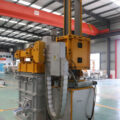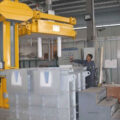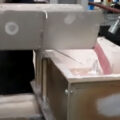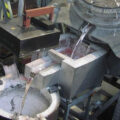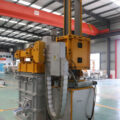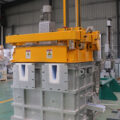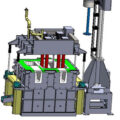Online purification equipment is an advanced melt purification method. The aluminum melt of primary aluminum, scrap, and remelted waste must be purified before being cast into ingots, slabs or rods. This can be accomplished by blowing non-chemically reactive gases such as nitrogen or argon into the aluminum melt. In most cases, a halogen gas is also used, usually chlorine. This treatment can remove dissolved hydrogen, alkali metals (such as sodium, potassium, and lithium), alkaline earth metals (such as calcium), and small solid particles such as aluminum oxides and other non-metallic impurities.

Many primary aluminum production and processing enterprises use AdTech online purification equipment. In this treatment method, the effectiveness of refined gas increases as the total contact area between gas and metal increases. The effectiveness of bubbles also increases with their spread throughout the aluminum melt being processed. A very effective way to reduce the size of the bubbles and spread them evenly is to use a rotating nozzle set in the aluminum melt. The refining speed of the rotating nozzle system can be increased by increasing the air velocity used. In addition, it is usually necessary to increase the rotation speed of the nozzle to continuously produce the desired small bubbles and spread them in the entire aluminum melt in the refining zone of the system. This increase in airflow and nozzle rotation speed is usually accompanied by an increase in turbulence and turbulence on the surface of the aluminum melt. Therefore, the maximum refining speed of a given refining system is limited by the maximum permissible flow and surface turbulence or unevenness.
In essence, this online purification process is to spread the blown gas in the entire melt in the form of very small bubbles. Hydrogen enters the bubbles through desorption and is removed, and other non-metallic impurities float into the scum layer on the human surface through buoyancy. Alkali metals are removed by a chemical reaction with halogen gas anions. The transfer of hydrogen from the molten metal to the inert gas bubbles is driven by the partial pressure difference. Hydrogen has a high degree of dispersion in the aluminum melt, and this transfer process is mainly carried out on the interface. Therefore, the larger the interface area, the shorter the time required to reach a certain degree of outgassing.
At the same time, the larger the interface area, the more opportunities for bubbles to encounter and capture impurities. Therefore, the larger the interface area, the higher the refining efficiency. The dispersal of the blowing gas is completed by the rotating nozzle, which can cause the melt to produce a great turbulence. This turbulent flow can make small non-metallic particles aggregate into large aggregates, which are driven by bubbles to float to the surface of the melt. This turbulence can also make small bubbles collide with each other and increase. This turbulent flow in the metal also helps to keep the tank free of precipitation and oxide accumulation. The non-metallic impurities floating in the metal are removed with the scum, and the hydrogen adsorbed from the metal is discharged with the exhaust gas.

